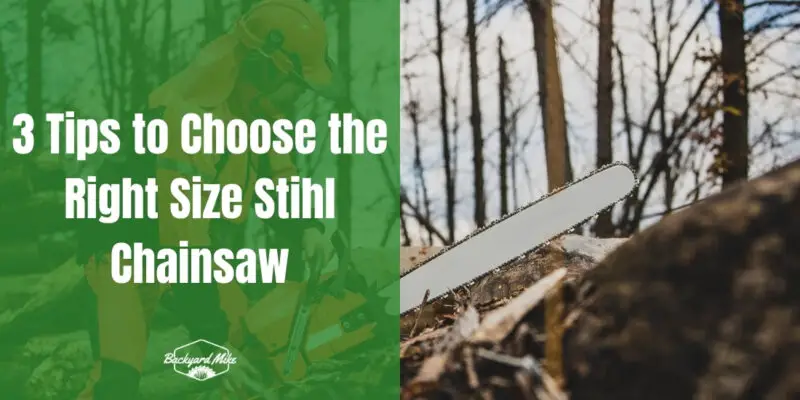To select the right size STIHL chainsaw, start by evaluating your task requirements and experience level; lighter models suit beginners, while more powerful options handle tougher jobs. Determine the power needed and bar length, ensuring compatibility with wood diameter. Consider ergonomics, focusing on weight balance and comfort for safety and precision. Choose based on usage frequency—lightweight for occasional tasks, durable for regular use. Discover more as you weigh these factors for the best choice.
Key Takeaways
- Assess the complexity of tasks to determine the necessary chainsaw power and bar length.
- Match the chainsaw's engine displacement with the wood diameter you typically cut.
- Consider ergonomic features to enhance comfort and control during prolonged use.
- Choose a chainsaw model based on the frequency of use and task demands.
- Decide between gas, electric, or battery-powered chainsaws based on power needs and mobility preferences.
Consider Your Task Requirements and Experience Level
When choosing the right Stihl chainsaw, it's important to evaluate both your task requirements and experience level. Begin by analyzing the complexity of your tasks. For pruning and light cutting, a lighter model like the MS 170 offers the safety and comfort needed for less experienced users. If you're handling storm damage or cutting firewood regularly, consider a more powerful option like the MS 271, designed for heavier tasks. Overestimating power requirements can lead to poor choices, so ensure your selection aligns with your actual needs. User safety is paramount, so choose a chainsaw with features like anti-vibration technology and the STIHL Quickstop Chain Brake. These enhancements not only improve comfort but also guarantee safer operation. Additionally, consider whether a gas, corded electric, or battery-powered model suits your needs best, as each type offers unique benefits and limitations for various tasks.
Evaluate the Chainsaw's Power and Bar Length
How do you guarantee you've chosen the right power and bar length for your Stihl chainsaw? Start by evaluating the chainsaw's power capacity. Look for models with suitable engine displacement; larger engines deliver more power, ideal for thicker logs and frequent use. Consider the power-to-weight ratio and chain speed, confirming efficient performance with less strain. Torque output is vital for cutting large or hard wood efficiently. Next, assess the ideal bar length. Choose from Stihl's range of 12 to 32 inches based on your wood diameter. Remember, longer bars need more engine power, so match them accordingly. User preference is key—some prefer shorter bars for better handling. Make sure your selection aligns with your tasks for maximum efficiency and control. Stihl chainsaws often come with features like an anti-vibration system to enhance user comfort. Chain specifications such as pitch and gauge are crucial in ensuring compatibility with your chainsaw model, which can affect overall performance and safety.
Factor in Ergonomics and Frequency of Use
Selecting the right Stihl chainsaw involves considering ergonomics and how often you'll use the tool. Ergonomic features like anti-vibration systems and ergonomic handles reduce fatigue, making long tasks more comfortable. A chainsaw with a balanced weight and a wrap handle guarantees better control, which is essential for precise cuts. For those who prioritize safety, features like a trigger lock and anti-kickback chains can significantly reduce the risk of accidents. Frequency effects also play a role in your decision. For occasional pruning, lightweight models like the MS 170 are ideal. More frequent use demands durable saws, such as the MS 271, with features like Easy Start and Quick Chain Adjustment. Choosing models based on usage frequency and task demands ensures you select the most suitable chainsaw for your needs.
Frequently Asked Questions
How Do I Determine the Correct Chain Pitch and Gauge for My Stihl Chainsaw?
Check your Stihl chainsaw's guide bar or manual for chain specifications. Measure the chain pitch between every other rivet. Confirm the gauge matches the bar groove for a secure fit, promoting reliable performance and a sense of belonging.
What Safety Features Should I Look for in a Stihl Chainsaw?
When choosing a Stihl chainsaw, prioritize safety features like chain brakes and right-hand guards for ideal chainsaw protection. Confirm your choice aligns with your safety needs, so you can confidently join the chainsaw community.
How Do I Ensure Compatibility of Chainsaw Parts and Accessories?
Guarantee chainsaw compatibility by matching bar length and chain pitch with your model. For accessory selection, consult approved dealers. They'll guide you in finding model-specific parts, guaranteeing you feel confident and connected within the chainsaw community.
What Are the Maintenance Requirements for a Stihl Chainsaw?
You'd think a chainsaw maintains itself, right? Well, keeping your Stihl in top shape requires regular oil changes and chain sharpening. Embrace the community spirit by sharing tips and stories with fellow chainsaw enthusiasts. Keep it sharp!
Are There Local Services for Stihl Chainsaw Repairs and Spare Parts?
You've got local repair options at Ace Hardware, an authorized Stihl dealer. They provide spare parts and expert maintenance, ensuring your chainsaw runs smoothly. Feel confident knowing you're part of a community that values quality service.
Conclusion
When choosing the right Stihl chainsaw, focus on your task requirements, experience level, and comfort. You might think a bigger chainsaw is better, but a smaller, more manageable one can be more efficient for your needs. Consider the power and bar length suitable for the jobs you tackle most often. Don't overlook ergonomics; a well-balanced chainsaw reduces fatigue and enhances control. By evaluating these factors, you'll find a chainsaw that's both effective and comfortable for frequent use.


